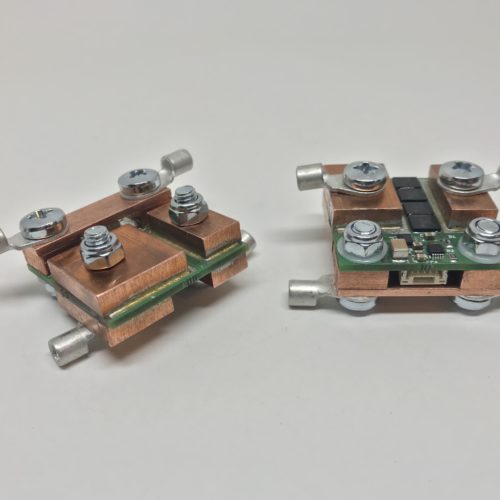A very robust and simple type of tesla coil.
The video above shows the SGTC I built in 2014 for the upcoming open door day at my school. With today’s knowledge, I would make some things a little different, but nevertheless it worked and produced some impressive streamers and even made it into the local newspaper.

Most commonly used circuits for SGTCs illustrated above. Long story short: Both work, but use schematic A, as it will produce less HF-emissions.
About the circuit
- Capacitor C1 gets charged through secondary side of HV-Transformer T1
- Voltage of capacitor C1 gets high enough for a spark jumping across the spark gap, shortening C1 with the primary coil of the tesla transformer T2
- The mentioned primary side of T2 gets supplied with the energy that was stored inside C1, enormous voltage on secondary side of T2 due to high winding ratio (n2/n1=100…400), with already several kilovolts on the primary side.
- C1 and T2 primary coil match the resonance frequency formed by the T2 secondary coil and the capacitance between its many windings + torus capacitance, leading to resonance phenomenon and further significant voltage increase.
- Discharge of energy into the air, resulting in sparks coming out of the metal body (usually torus or sphere) mounted on top of the secondary coil of T2.
- Ozone!
The HV-transformers used for SGTCs are usually old microwave transformers, Oil burner ignition transformers (OBIT) or neon sign transformers (NST). I personally prefer NSTs and especially the so called stray-field versions of them with removable stray-core for increased current output. With removed stray-core either good cooling or only short operation (like 30 seconds on, 2 minutes off) is required. The company “Klinger” used to make them, however they became pretty rare and expensive. Capacitor C1 is usually an array of high quality serial and parallel connected impulse-resistant film capacitors (WIMA FKP1) in order to withstand the high voltage and rough treatment they must endure for our entertainment.
Fine-tuning of the resonance circuit can be done by changing location of the tap clamp on the primary coil of T2 in order to get the longest streamers. The most critical part in my experience is the spark gap as its distance must match with the secondary voltage of transformer T1, in order to let C1 charge up nearly all the way before shortening. The sparks wear down the copper contact surfaces pretty quickly, resulting in black burn marks that electrically isolate and must be abraded manually from time to time. A fan for gently removing the ozone from the spark gap without blowing away the sparks is also recommendable.
As far as I was told, the tesla coil is still showcased on various occasions like open door days or “The Long Night of Science” at HTL Saalfelden.





